Proper Commercial Refrigerator Temperature: Safety & Sustainability
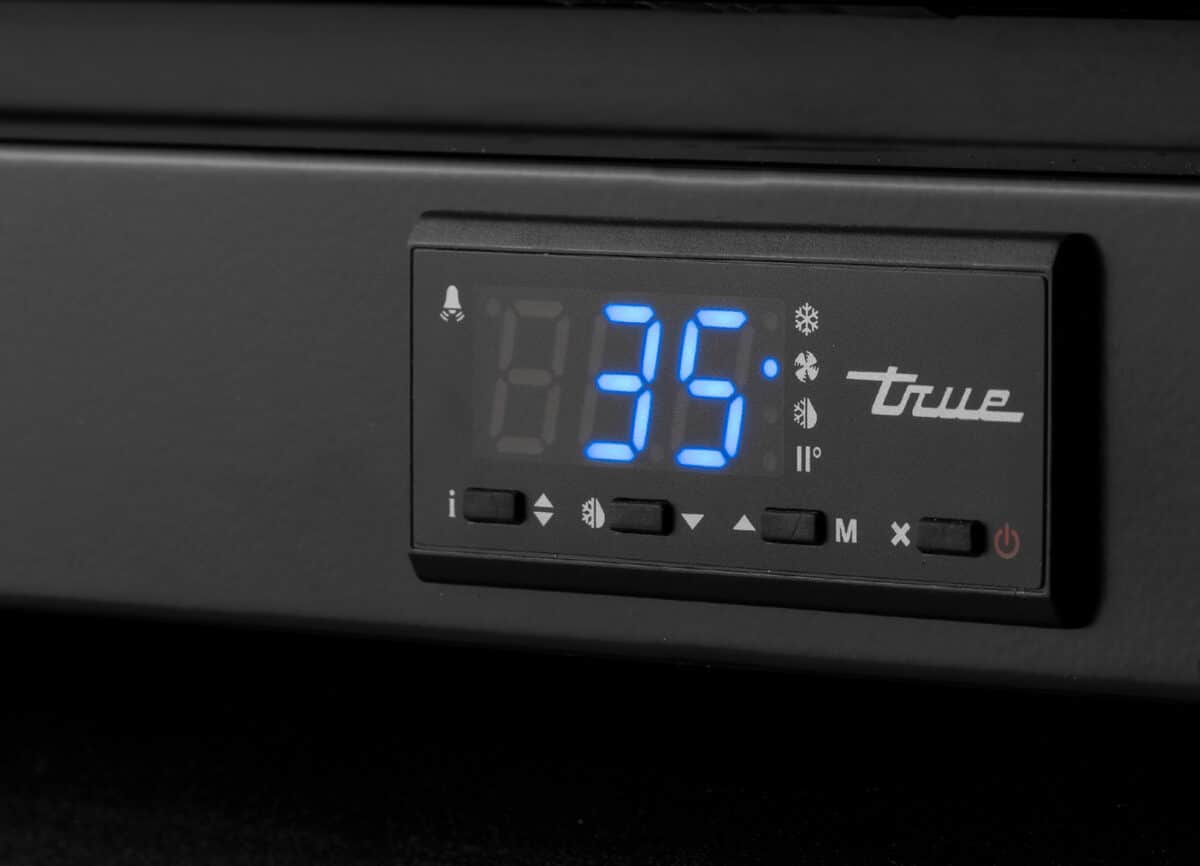
Your kitchen’s commercial refrigerator is one of your most essential pieces of equipment. Once it’s at the proper refrigerator temperature, though, it’s one of those things that we all “set and forget.” Your refrigerator is probably low on your worry list unless it stops working.
However, it serves a critical function in maintaining food safety and compliance. A commercial freezer or commercial fridge is also a big energy user. It’s crucial that everyone in the kitchen understands the importance of refrigerator safety and maintenance.
Fortune Favors the Cold: Ideal Commercial Fridge Temperature Settings
So, what is the proper temperature for your commercial refrigerator? Ideally, commercial fridges should keep the contents below 40°F (4°C). Most food safety guidelines recommend an optimal setting at or below 38°F (3.3°C) to give an extra buffer during busy times.
By setting the fridge to 38°F (3.3°C), you’ll ensure that even if the door is opened and closed frequently or the fridge is stocked extra full, your food items will still stay at a safe temperature and maintain the quality of all your delicious gourmet goodies.
The Mold War: Understanding Food Safety Standards

Temperature is one of the most critical factors (if not the most critical factor) in food safety. The right temperatures thwart the growth of bacteria and nasty pathogens that lead to foodborne illness (which we don’t need to tell you, can cause major headaches and damage to your reputation and bottom line).
Bacterial growth slows dramatically at 40°F (4°C). Freezing food down to a frigid 0°F (-18°C) stops the growth completely.
Commercial kitchens must follow stringent regulations and guidelines to operate effectively and keep food products safe. The Food and Drug Administration (FDA) sets the guidelines for establishments in the United States, as outlined in the Food Safety Modernization Act (FSMA).
The Act includes requirements for commercial refrigeration. Your local health department may also enforce codes and conduct inspections. Keep your fridge at the right temperature to avoid the stress and hassle of inspection violations.
How do you know if your refrigerator is approaching the danger zone? Anything above 40°F (4°C) can play host to bacteria and pathogens. Bacteria thrive in temperatures up to 140°F (60°C). In fact, they can double in just 20 minutes. Keep your customers safe by keeping food out of the danger zone as much as possible.
Food Swings: Customizing Temperature Set Points
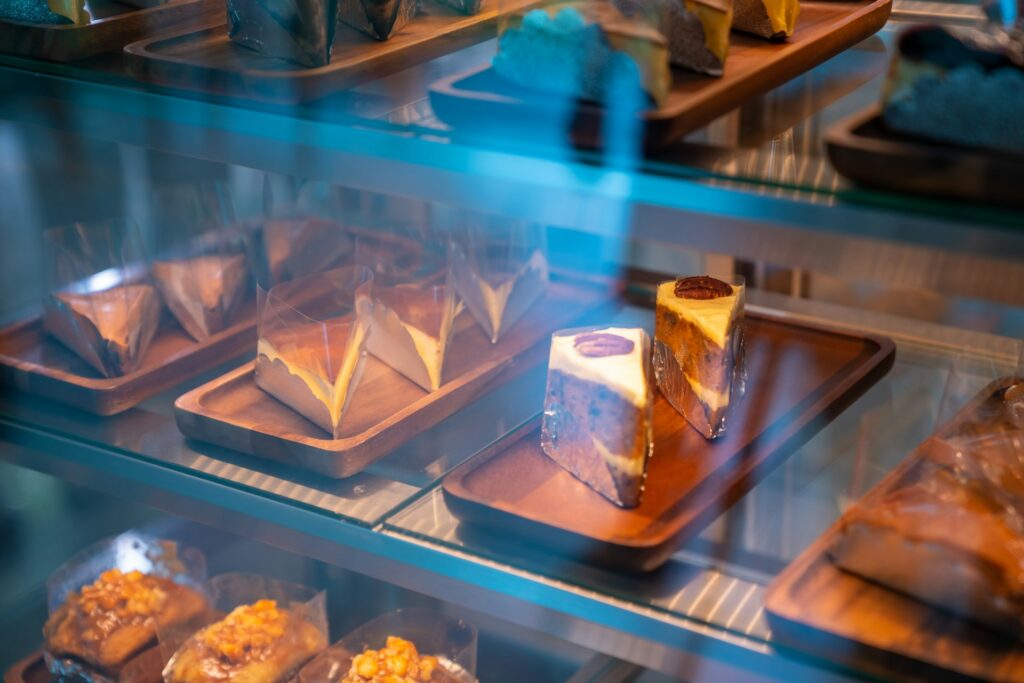
When the FDA set the temperature guidelines for food safety, they closely looked at the growth characteristics of common food bacteria and pathogens. Most of the nastiest, most harmful invaders thrive within that 40°F (4°C) and 140°F (60°C) danger zone.
Food must be heated to 165°F (74°C) for at least 15 seconds to kill bacteria like the dreaded Salmonella. While freezing temps won’t kill most pathogens, they will prevent them from growing and multiplying.
Cold temperatures are crucial for commonly quick-to-spoil foods like meat and dairy products. Some fruits and vegetables can stay safe at slightly higher temperatures (and some may require different levels of humidity and ventilation).
A few of the most common guidelines are:
- Meat, Poultry, and Seafood: store at temperatures close to 32°F (0°C) to prevent food spoilage. These foods should be stored separately from others to avoid cross-contamination.
- Dairy Products like Milk, Cheese, & Yogurt: keep at temperatures around 38°F (3.3°C). The slightly higher temp keeps dairy from freezing and separating.
- Fresh Produce: varies depending on the type. Leafy greens and berries do best at cool temps near 40°F (4°C). On the other hand, some tropical fruits like bananas and mangoes prefer higher temperatures around 50°F to 55°F (10°C to 13°C).
- Bakery and Dry Storage: Most dry storage items, such as grains and legumes, don’t require refrigeration, but they last longer in cool, dry conditions. Bread and pastries should be kept at or slightly below room temperature to avoid mold growth.
All the ingredients in your kitchen have an optimal life span and an expiration date. Even when they’re kept at the proper temperatures, the product will be less than ideal after a period of time. Frozen items can start to taste “off” and experience freezer burn. Other items may be shelf-friendly, but not indefinitely. The best practice is to rotate items frequently, and never take risks with food safety!
Colder and Wiser: Navigating Health Inspection and Regulations
What will you do if your operation is subject to a health department inspection? In most cases, it’s not a question of “if” but rather “when.” There are a few items that should be on your checklist to ensure you’re compliant with temperature control guidelines:
- Verify Equipment Settings: Check your cooling equipment settings and make sure the temperatures match the requirements for each stored food type.
- Maintain Temperature Logs: You should regularly check and record the temperature of your refrigerators and freezers.
- Calibrate Thermometers: Check and calibrate your thermometers for accuracy using the ice water (32°F or 0°C) or boiling water 212°F (100°C) tests. Store thermometers in the coolest and warmest part of each unit.
- Cool Food Safely: Hot foods should be cooled from 140°F to 70°F (60°C to 21°C) within two hours and then from 70°F to 40°F (21°C to 4°C) or lower within an additional four hours.
- Keep Things Clean and Accessible: Your temperature controls should be readily accessible, and your refrigerator units should always be very clean.
- Train Your Team: Every staff member should be trained on proper temperature control and the importance of regular checks and documentation.
So, what are some of the most common violations? Where are you likely to get tripped up during an inspection? It varies by kitchen and situation, but some of the most common cooling equipment violations include:
- Improper storage temperatures.
- Failing to cool hot foods safely.
- Poor maintenance of cooling equipment.
- Cleaning violations and dirty equipment.
- Not using or misusing thermometers.
- Not maintaining proper documentation and temperature logs.
A Clean Chill of Health: Refrigerator Maintenance Best Practices to Maintain the Ideal Temp

How do you ensure commercial refrigeration units maintain an optimal temperature and run efficiently? There are a few routines that can help you stay on top of your refrigerator performance.
Perform Routine Checks
- Check Seals: Inspect the seals and gaskets around your fridge and freezer door for wear and tear. Replace faulty seals immediately.
- Monitor Temperatures: Regularly check the fridge’s temperature settings. Use a thermometer to verify.
- Check the Coils: Even in the cleanest kitchens, dust and debris can build up. Clean the condenser and evaporator coils every 2-3 months (at least).
Get a Clean Routine
- Daily: As part of your daily cleaning, wipe down the interior surface of the fridge with a food-safe disinfectant. Clean up any spills immediately.
- Weekly: Make sure every item in your fridge is rotated, expiration dates are checked, and nothing is past its prime. Check for temperature irregularities. Listen to your fridge for strange sounds and look beneath the refrigerator for any leaks (signs of an urgent problem).
- Annually/Bi-Annually: Once every 6-12 months, you should have professional maintenance conducted on the system. They should check refrigerant levels, motor operations, electrical connections, and temperature controls.
Hedge Door Bets and Keep the Door Doing Its Job
- Check for Misalignment and Damage: Regularly inspect the doors of your fridge and freezer. Repair any damaged hinges and closures to ensure a tight seal.
- Check the Gasket for Wear and Tear: Gaskets can be a common area that wears out over time. Inspect the door gaskets for cracks, tears, and warping. Clean them regularly with mild soap and water. If you notice any issues, replace them right away.
- Minimize Usage: For high-traffic environments, help staff minimize the instances of door openings. Organize contents neatly and clearly for quick retrieval. Consider installing strip curtains to reduce the air exchange.
Set Your Mind at Freeze: Monitoring and Recording Temperature Logs
Temperature logs are an aspect of commercial kitchen maintenance that people often avoid. At the end of a busy shift, the last thing most of us want to do is write down a bunch of temperatures.
But your temperature logs provide a wealth of information. They’re the first sign that something may be wrong with the fridge. Moreover, they’ll protect you in the event of a health inspection. So, it’s best to always follow through with logging. Here are a few tips and tricks to make temperature tracking easier.
- Spring for digital thermometers: Use an accurate digital thermometer with instant readings. Look for one that’s easy to calibrate.
- Use a data logger: A data logger offers continuous monitoring. Record the temps at set intervals and receive alerts at the first trace that something is awry.
- Try infrared: An infrared thermometer lets you monitor food and equipment temperatures without direct contact. It’s fast (and even fun)!
How often should you record your temperatures? To comply with health inspections, it needs to be a regular activity.
Here’s when you must check and record temperatures:
- Every four hours to stay in compliance with most regulations.
- When you restock or clean out the fridge or freezer.
- After any repair or maintenance.
- At the beginning and end of each service shift.
- During the cooling of cooked foods or the thawing of frozen foods.
Once you’ve got the logs working and in place, a regular logging routine can help you in several ways. You’ll be able to quickly identify patterns and trends to stay aware of any equipment issues. You’ll also know if someone isn’t really checking (because they’ll often have the same safe temperature recorded over and over). With fluctuations in activity and the foods in the fridge, the accurate temperature will vary.
After you’ve been recording temperatures for a while, you’ll be able to review the logs and pinpoint the best times for preventative maintenance. The logs tell a valuable story. They can help you adjust your storage practices and enhance food safety. You can also use them to minimize food waste and train staff on best practices.
Keeping Your Cool: Optimal Refrigerator Loading to Avoid Temperature Increases

One way to maintain the ideal temperature range and ensure food quality and safety is to pay attention to how you load your fridge. It’s tempting to sling food in the fridge in a rush, but by taking the time to arrange and organize the fridge carefully, you’ll save time and money in the long run.
Allow plenty of room for circulation in the fridge. Each item should have space around it for air circulation. When a refrigerator is packed too tightly, the airflow can get blocked, and temperatures become uneven.
Make sure your hot foods cool down before putting them in the fridge. Placing hot items in the fridge will raise the temperature, adding more strain to the machine and impacting other items on the shelf. Always seal foods completely in airtight containers or with wrap so they don’t release moisture, which can also impact the temperature.
Where should you put items in the fridge? Like a game of Tetris, it requires a little strategy. Foods that need cold temps (like meat) should stay in the back, where there are fewer changes in the air temp. Less sensitive foods and beverages can safely hang out in the front. Raw and cooked foods should always be stored separately, and raw meat especially should be kept in the lower part of the fridge to avoid drips and leaks onto other foods.
Beyond the Cool of Duty
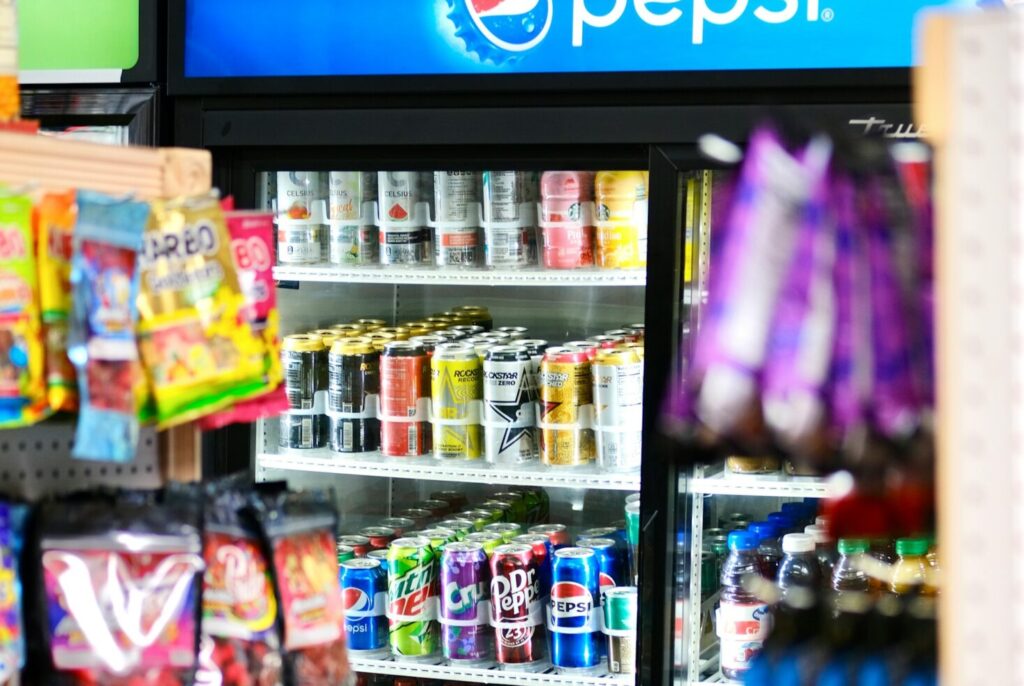
As with many areas of our lives, innovations in refrigeration technology are advancing fast. Digital tools and connectivity are transforming the field and helping make the kitchen safer and more efficient.
The most recent advancements are aimed at precision temperature control. Advanced inverter compressors adjust speeds based on the internal temperature demand, making them extra energy efficient. The latest dynamic cooling systems help cold air move evenly throughout the fridge, helping you avoid hot spots and keeping everything at a consistent, safe temperature.
Some cutting-edge commercial refrigerators include thermal imaging and infrared sensors. These tools give you real-time temperature readings and recordings, and they can offer data from different points within the unit so you can easily and quickly adjust.
IoT and Smart refrigeration offer the ability to monitor and remotely control the fridge with a smartphone or similar device. It’s extremely convenient to receive an alert or check temperatures when you’re off-site, and it can help you avoid many potential issues.
Smart refrigerators can analyze data about their operations and internal conditions. That means they can give you a heads-up before disaster strikes. They can also make adjustments to optimize their energy use, which can help you lower utilities and extend the life of your valuable appliance.
Many IoT refrigeration technologies integrate with restaurant and food safety management systems. Not only does this help you consistently meet safety standards and avoid manual errors, but it can also streamline compliance reporting.
Green Around the Chills: Energy Efficiency in Commercial Refrigeration

Many of the important improvements around commercial refrigeration are centered on energy efficiency. Why? Because it’s good for the environment and for your bottom line. Energy efficiency protects you from food loss and helps you lower operational energy costs.
For the most energy-efficient settings, it’s best to set the unit at the lowest necessary temperature for food safety. The lower temperature will help cut back on energy consumption but won’t compromise your food’s safety (or delicious quality).
Another way to boost energy efficiency is to maintain it regularly. Clean out the fridge regularly. Keep the coils clear of dust and residue. Make sure the seals are wiped down and intact. Think of it as supporting your fridge to meet its full potential.
Other features like LED lighting, ECM (electronically commutated motor) fans, and advanced insulation materials also help curb your fridge’s energy consumption. Smart sensors make adjustments that reduce inefficiencies. Many of the newer refrigerants are cleaner and have a lower environmental impact than traditional HFCs (hydrofluorocarbons).
If you’re worried about reducing energy consumption without compromising your food quality, here are the best steps you can take:
- Avoid overloading the fridge and restricting airflow.
- Avoid underloading the fridge—keep enough mass to retain cold.
- Use night covers and door closures when your business is closed.
- Regularly check the temperature and adjust the settings as needed.
- Pay attention to seasonal environmental changes and adjust the fridge for the conditions.
A Cool’s Paradise: Exploring Types of Commercial Refrigerators and Freezers
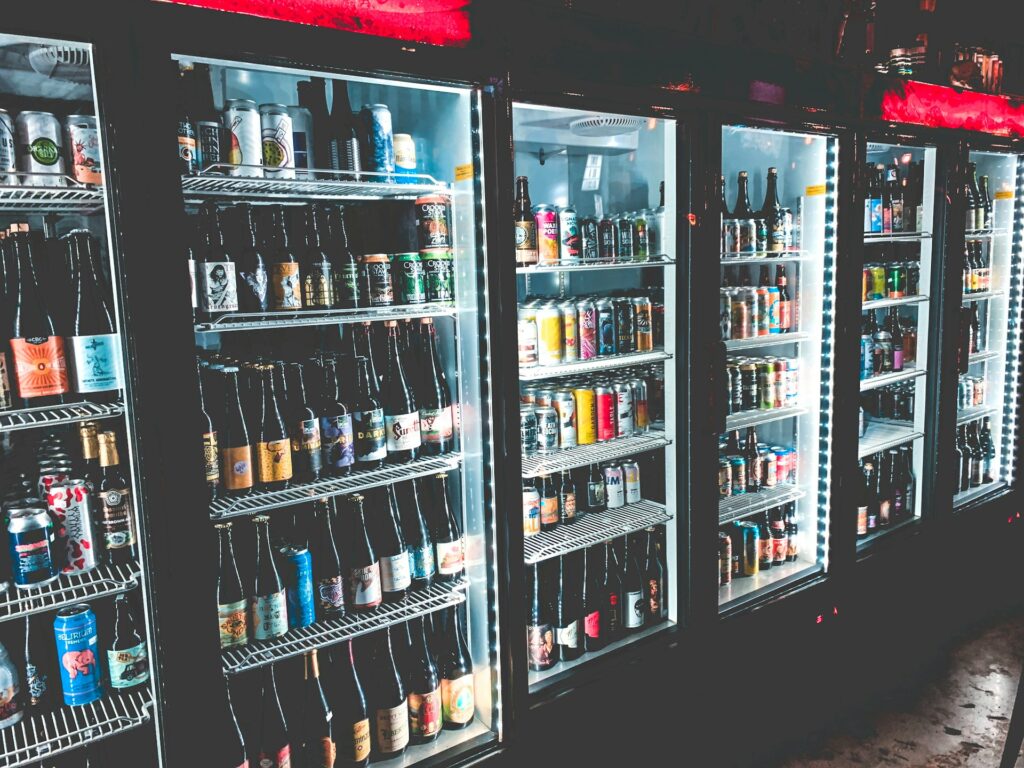
What are your best choices when it comes time to buy a fridge or freezer for your restaurant? How do you get the best equipment for your particular food service environment?
Purchasing something as significant as a fridge for your commercial kitchen requires some research and homework. Here’s a brief overview of the various options:
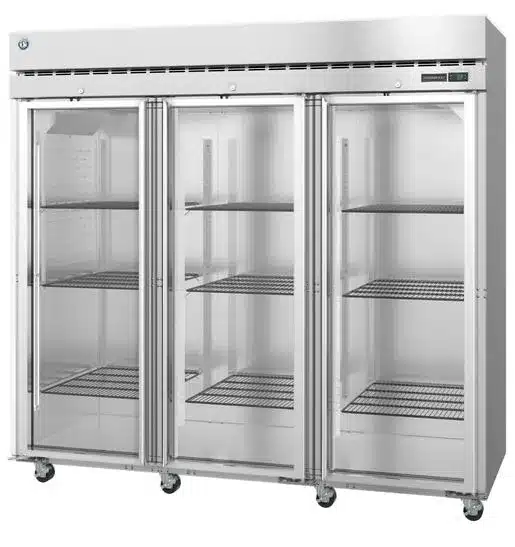
Reach-in Refrigerators and Freezers
A reach-in fridge is just like the name implies—a fridge that opens like a closet (or like your home fridge). These are the most common types of refrigerators and are ideal for storing anything you use frequently. Reach-ins are available in many sizes and are often compact, making them ideal for small kitchens with limited space.
Like your standard refrigerator, commercial reach-in refrigerators feature multiple sections and adjustable shelves to help you organize different products.
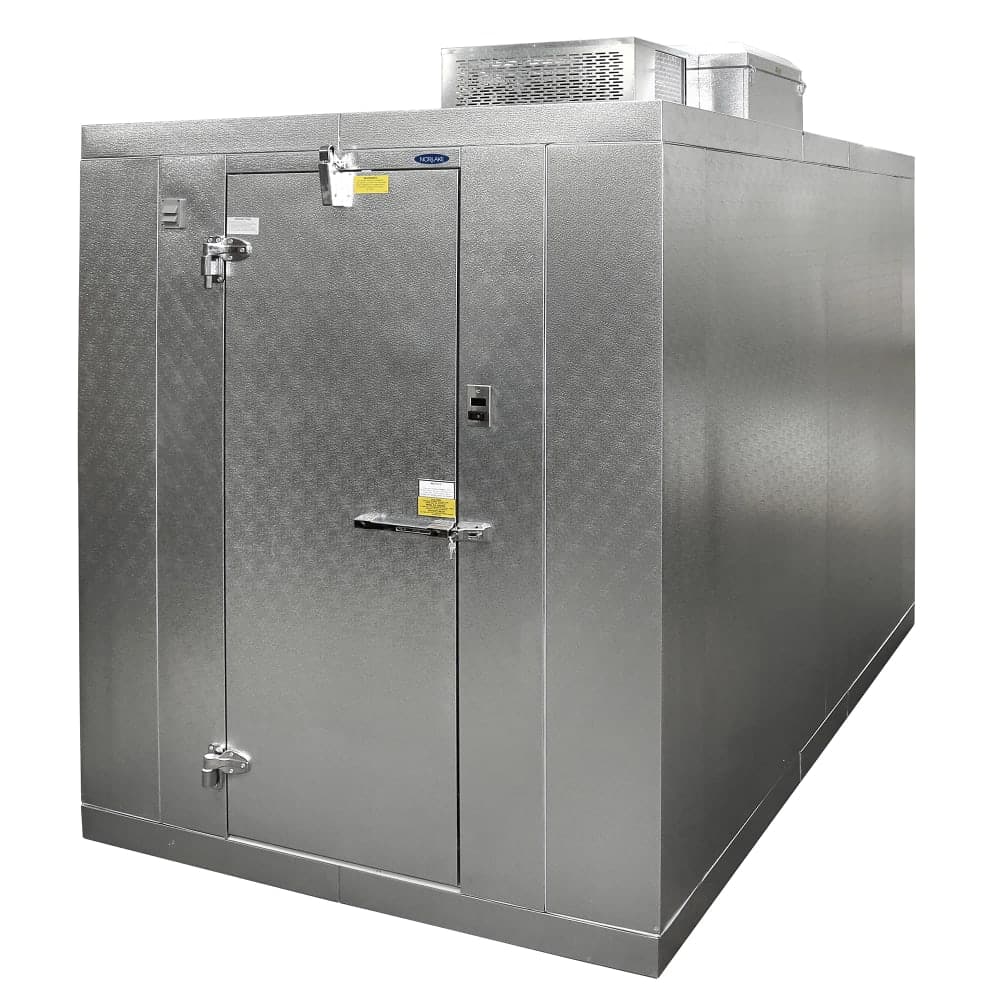
Walk-in Refrigerators and Freezers
For larger operations that require bulk storage, walk-in coolers are often the best answer. A walk-in refrigerator gives you ample space for storing food in almost any quantity. Walk-ins are customizable—built to your kitchen’s specific dimensions.
The drawback of walk-ins is that they’re not ideal for small kitchens or frequent use. Even if you have a walk-in fridge in your kitchen, you may still need a reach-in fridge for easy access from your line.
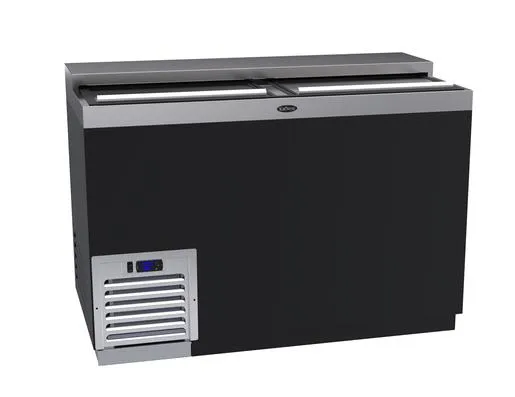
Undercounter Refrigerators and Freezers
The smallest of the options, undercounter units offer additional refrigeration space without taking up too much of your valuable floor space. These units fit underneath the counter or bar of your kitchen, making them a nice spot to store frequently used items.
Smaller under-counter refrigerators and freezers are also ideal for smaller kitchens, such as cafes or lunch counters. They can act as supplementary units for your larger walk-in or reach-in.
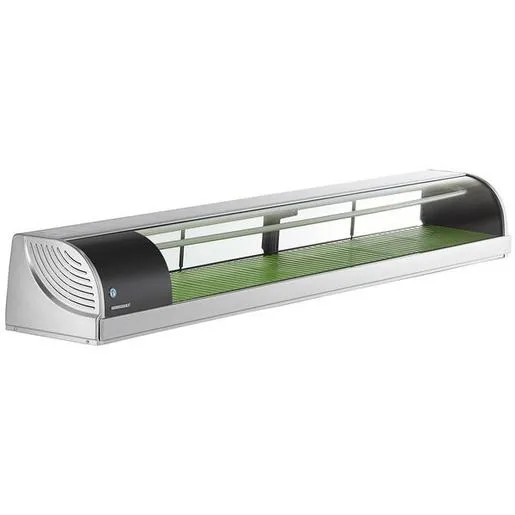
Display Case Units
Refrigerated display cases can show off your fare attractively while keeping salads crisp and deserts cold. Display cases are often used for pastries and snacks. Many cases feature technologies that help ensure a consistent temperature despite frequent openings. Double-paned glass and defrost help keep things stable and cut back on condensation.
Refrigerated display cases are often best located away from direct sunlight and heat sources. Like other refrigeration units, these units require regular maintenance—cleaning condenser coils and checking door seals to ensure they stay efficient.

Shop Eleven36 for All Your Commercial Refrigeration Needs
Your commercial refrigerator is a crucial part of your kitchen. Like any investment, it’s important to do your research and purchase the most reliable, durable option on the market.
Refrigerators do a big job—keeping food safe for your patrons. Maintaining food-safe temperatures helps you avoid dangerous bacteria and other foodborne contaminants that could hurt your visitors and reputation. Ideally, food should be stored at 40°F (4°C) in the refrigerator and frozen at 0°F (-18°C).
Familiarize yourself with food safety regulations and guidelines. It’s important to keep a log of your temperatures—for both reporting and for detecting issues with your unit before they become a major problem.
Keep your commercial refrigerator in good working condition by cleaning it and performing regular maintenance checks. These checks will also help you maintain the energy efficiency of your unit.
In today’s refrigerator industry, you have many options. Advances in technology can help make your job easier. For example, you can get notifications on your smartphone when your temperatures change. Built-in sensors help ensure the air is always consistent in the fridge.Commercial kitchens may need several different types of refrigerators and freezers, from a huge walk-in to a reach-in or cooling display counter. No matter what you’re in the market for, Eleven36 can help you find the best appliance for your business.
